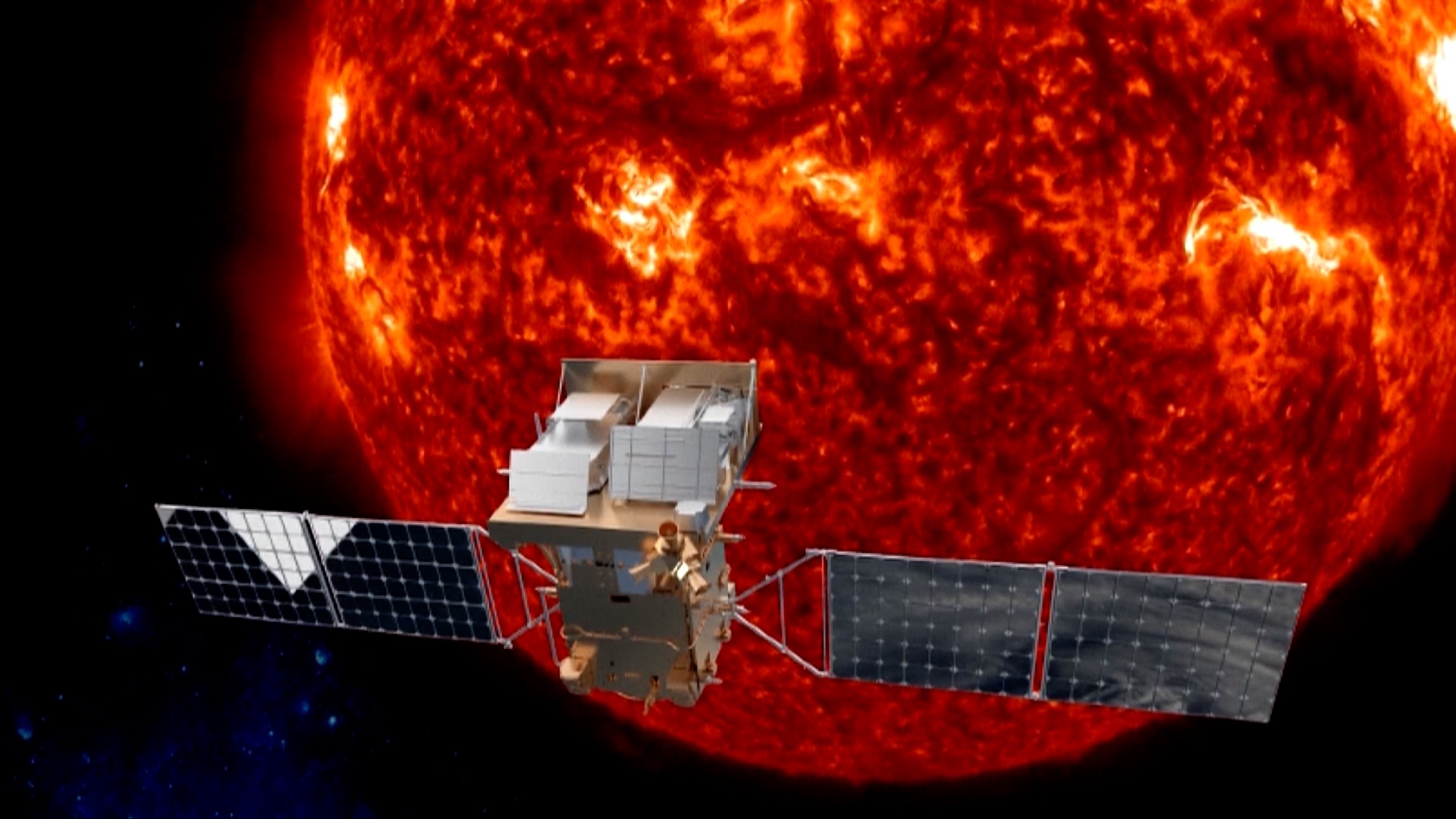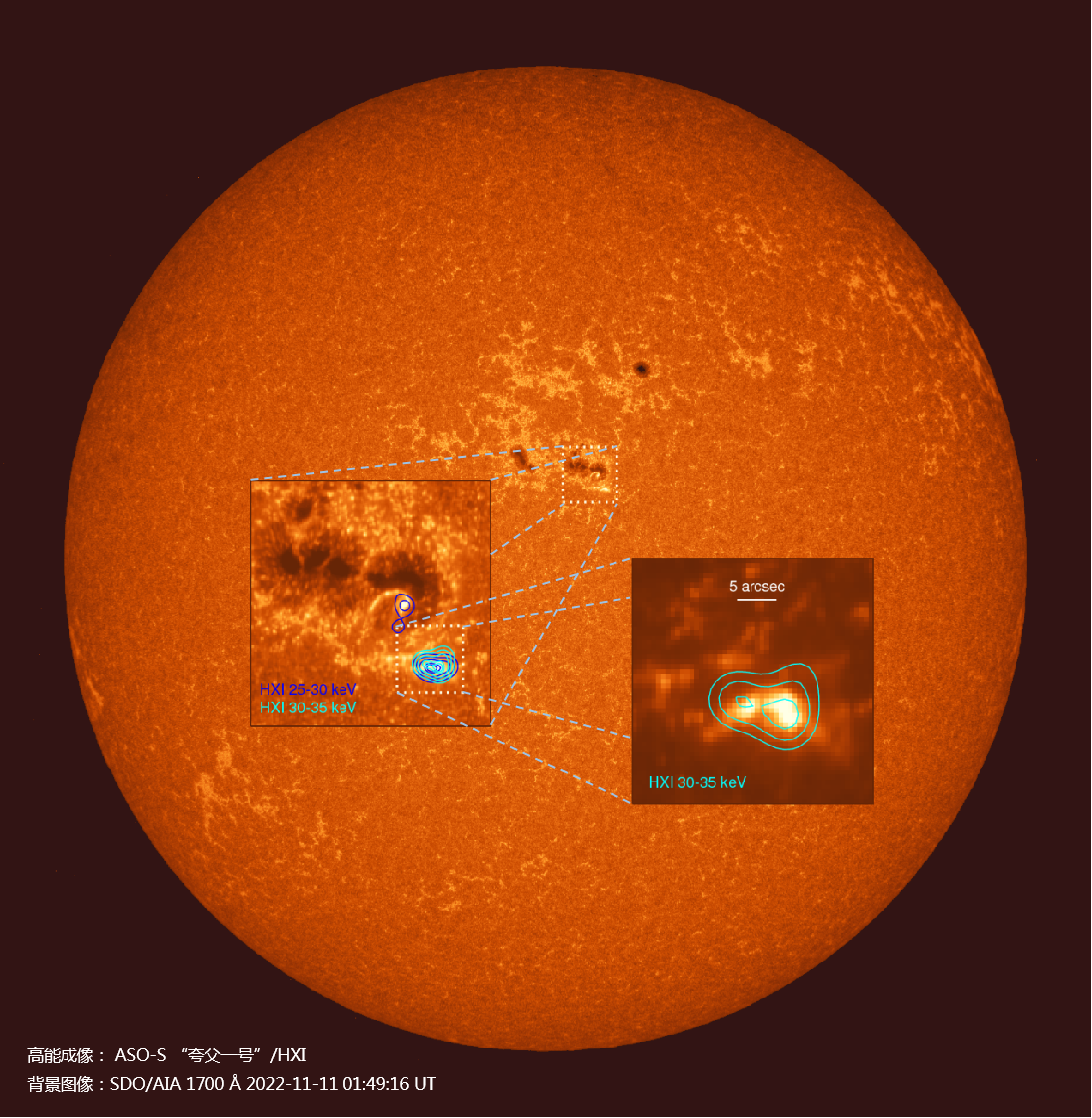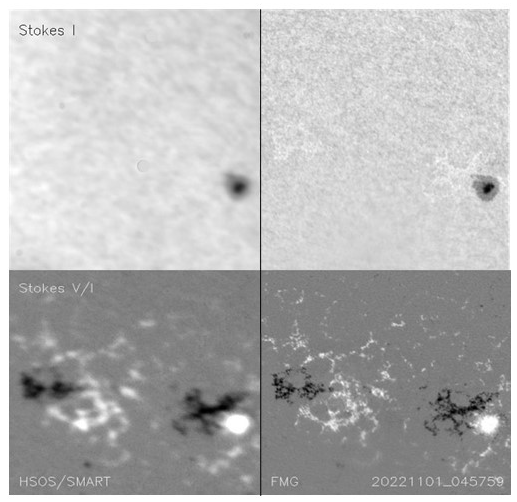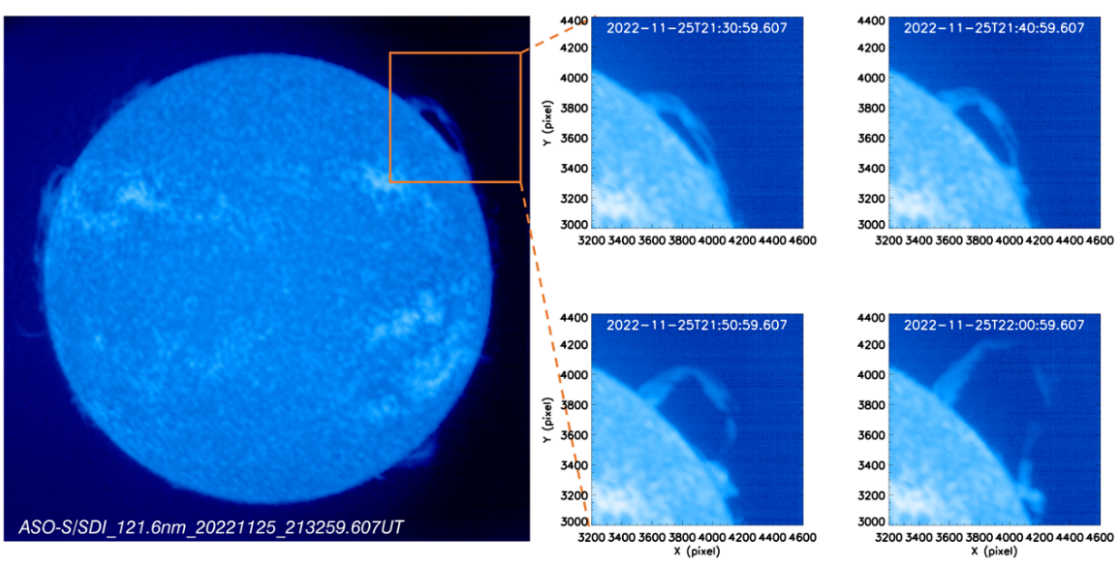00:42

China on Tuesday released the first batch of images captured by the country's first multipurpose solar probe at a press conference at the National Space Science Center in Beijing.
The Advanced Space-based Solar Observatory (ASO-S), dubbed Kuafu-1, has been operating in orbit 720 kilometers from the Earth, facing the sun since its launch in October.
The images were captured by three different payloads on the probe in the last two months – Full-disk MagnetoGraph (FMG), Lyman-alpha Solar Telescope (LST) and Hard X-ray Imager (HXI).

The hard X-ray of a C-class solar flare (in squares) captured by China's ASO-S' HXI on November 11, overlaid on the imaging of the sun's atmosphere, or chromosphere (bottom), observed by NASA's Solar Dynamics Observatory (SDO) imaged at the same time. /Chinese Academy of Sciences (CAS)
The hard X-ray of a C-class solar flare (in squares) captured by China's ASO-S' HXI on November 11, overlaid on the imaging of the sun's atmosphere, or chromosphere (bottom), observed by NASA's Solar Dynamics Observatory (SDO) imaged at the same time. /Chinese Academy of Sciences (CAS)
HXI achieved hard X-ray imaging of the solar flares, the only imager in the world to capture solar hard X-rays from the angle of the Earth.
Solar flares are sudden outbursts of particles from the sun's surface. Radiation from these bursts is emitted across a wide range of the electromagnetic spectrum that are characterized by different wavelengths. Hard X-rays are short wavelengths and has high photon energies.

A comparison of the monochromatic images filmed by the full heliospheric magnetic field telescope on the Earth and by the FMG in orbit. /CAS
A comparison of the monochromatic images filmed by the full heliospheric magnetic field telescope on the Earth and by the FMG in orbit. /CAS
The FMG observed the sun's magnetic field – the first time for China to make such observations from space.

An eruptive solar prominence filmed by a sub-payload of the LST on November 25, 2022. /CAS
An eruptive solar prominence filmed by a sub-payload of the LST on November 25, 2022. /CAS
The LST, comprising three pieces of equipment, obtained the first full-disk solar-image in Lyman-alpha line, in which solar prominence was clearly seen, and observed two rare white-light flares.
The sun emits light in all colors, but our eyes usually perceive it as yellow as the color has the brightest wavelength from the sun. Specialized instruments can observe light far beyond the ranges visible to the naked eye and collect data for scientists to study solar events that may bring potential harm to human activities.
NASA's Solar Dynamics Observatory, or SDO, also has three instruments. The Atmospheric Imaging Assembly (AIA), measured in angstroms (Å), images 10 different wavelengths. Its Helioseismic and Magnetic Imager (HMI) instrument focuses on the movement and magnetic properties of the sun's surface and provides three additional images.
China's ASO-S will provide more insight of the sun with data collected over the its four-year minimum life span. It is designed to accumulate and transmit back some 500 gigabytes of data each day. That is, tens of thousands of high-quality images.
During the ASO-S' time in space, it will cover the 2024 to 2025 peak of the solar cycle, a best window period for studying the sun, according to Gan Weiqun, the satellite's principal scientist from the Purple Mountain Observatory (PMO) under CAS.
Gan said that it's the world's first near-Earth satellite telescope to simultaneously monitor solar flares, coronal mass ejections and the sun's magnetic field.
"The satellite is still in the in-orbit test phase, and it is testing the observation capability of the payloads," said Gan.
The institute confirmed that the data and images collected by ASO-S will be opened to free access after the probe's initial commissioning phase.
Three ground stations in the cities of Sanya, Kashgar and Beijing, far apart from each other, are in charge of receiving data from ASO-S, before sending them in packages to a 2,048-core powerful computer mounted at the PMO for decoding.
The construction of the data base will be finished before next April, according to Gan.
(CGTN's Liu Wei, Zhao Chenchen and Zheng Yibing contributed to the story.)